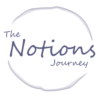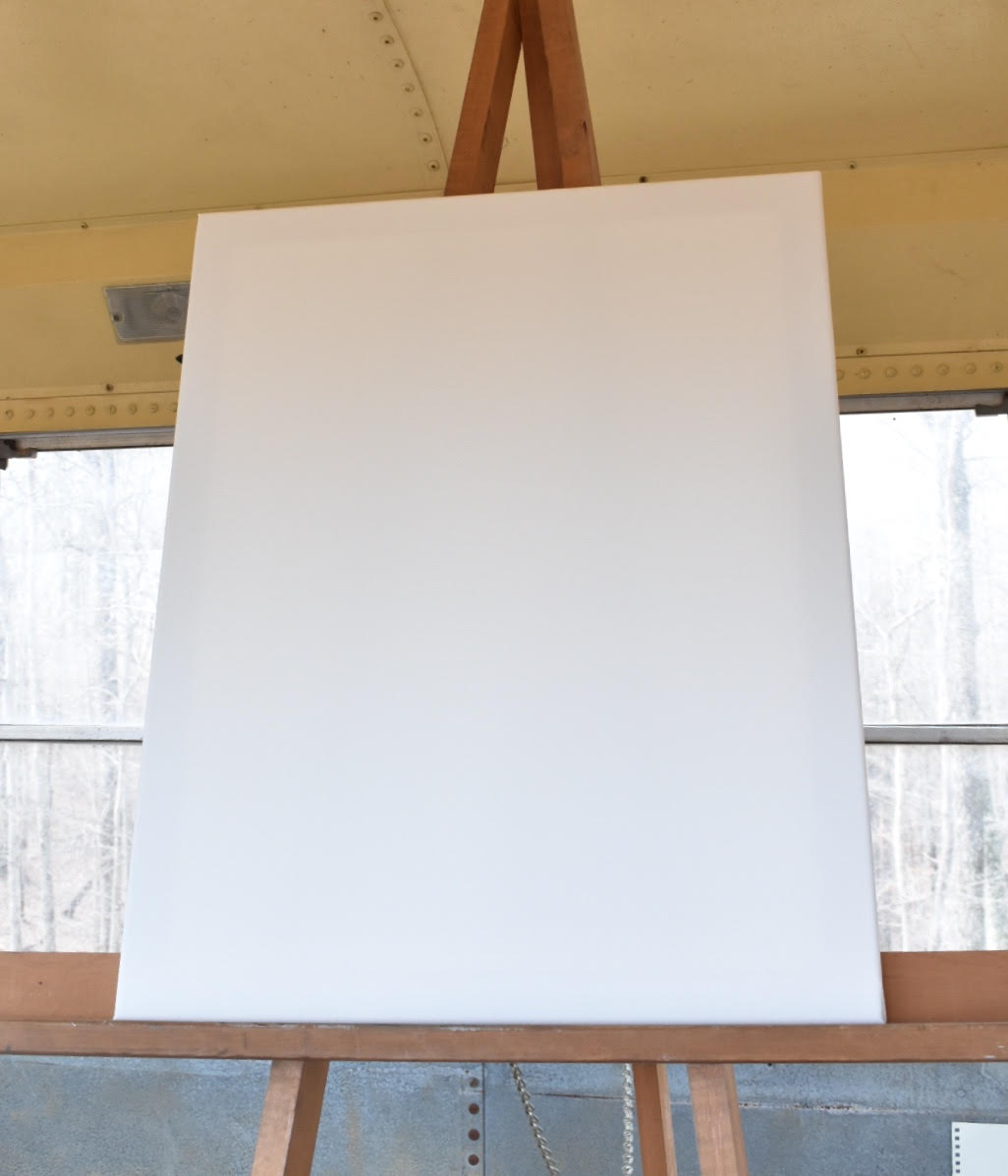 In part one of my series on art, I asked the question, is artistic talent an innate ability? Or does it come with hard work and practice? Did you miss it? Read it now, because Spoiler Alert! I am definitely in the camp of hard work and practice.
In part one of my series on art, I asked the question, is artistic talent an innate ability? Or does it come with hard work and practice? Did you miss it? Read it now, because Spoiler Alert! I am definitely in the camp of hard work and practice.
So maybe you’re completely new at this and don’t know where to start. Or maybe you are a seasoned artist but find yourself procrastinating from starting a new project. You have the desire to create, but still something is holding you back.
And there it is, staring at you. The empty canvas. The blank page. So full of potential! But it can be overwhelming and a little debilitating.
Even if art isn’t your thing, I hope you read on. These same concepts can be applied to many different aspects of life.
So how do you overcome the fear of the blank canvas?
Make a plan…
It is really hard for anyone to just sit down, mind a blank slate, and start painting. I think even the most seasoned artists struggle with this. They approach the canvas with a plan, and they’ve probably painted it in their head a dozen times before ever picking up the brush. Don’t put so much pressure on yourself to just turn it on and be creative. Look at reference photos, scenery, or props and come to the canvas with at least a direction in mind. It will free you up to jump right into to the project.
Let yourself make mistakes…
Use a pencil, and an eraser. Use the eraser as often as you need to. You don’t have to draw everything out in precision, but if you are having reservations about getting started because you are still working out the proportions and composition, sketching it out can be a good starting point to start to see how it fits on the page.
Sketch, trace, transfer…
One technique I’ve been employing lately, as taught to me by Mary Gwyn Bowen of Mary Gwyn’s Art, is to sketch out your initial drawing, then make a tracing of it. Bonus: Keep the tracing on file to recreate originals!
With this technique, you are going to sketch, and erase, and sketch, and throw it out, and start over, on basic low cost sketch paper until you have something you like. Then you trace it using a hard graphite pencil. Turn the paper over and go over your tracing using an Ebony pencil. Then, turn the paper back over one last time to retrace your original tracing onto your good paper or canvas. If your original drawing was falling off the page or leaning a little to the left, this is your chance to position it perfectly upon the page.
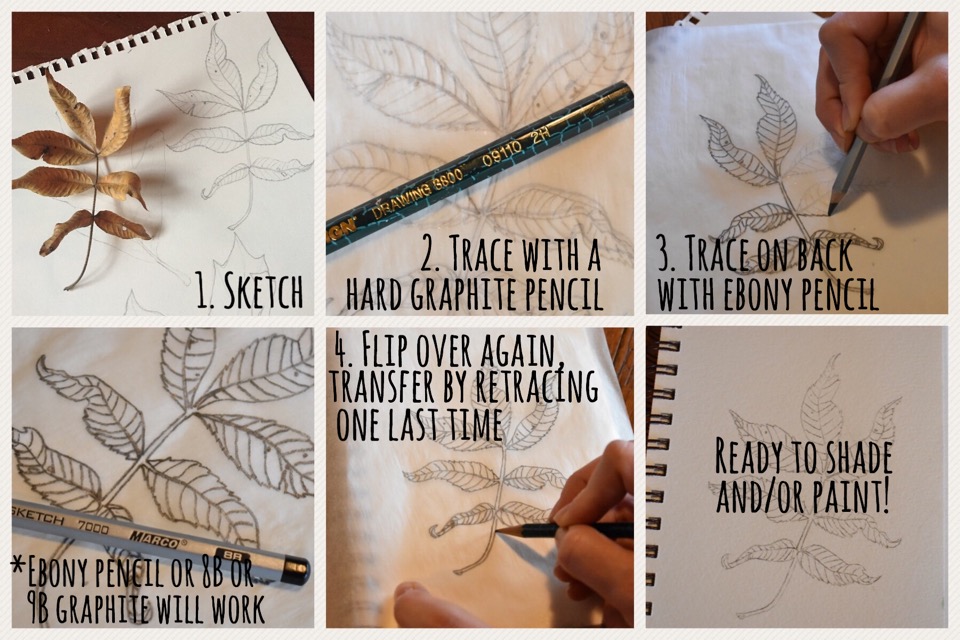
If you are working with watercolor or any transparent medium, you can choose to shade before applying paint. It gives the painting a lot of depth. The same trace and transfer technique can be used with oil paints and other opaque mediums too, though there would be no benefit to shading, you would just get your basic outline down.
Of course you still have to have a plan in mind to get to this point, but if your hesitation is in getting your composition perfect on the canvas before getting the paints out, it is a great way to take some away some of that guesswork.
Try new things…
I concentrated in oil painting in college. I love oil paints. I love the way they smell. I love how they glide on the canvas. I love cutting through the hardened top layer to get into the perfect color you mixed but left lying in the studio a little too long.
But I also love to learn new things, so I recently took up watercolors. Because what could be more different, right? I limped along on my own a while, then started taking Mary Gwyn’s courses at Watkins College of Art. She teaches botanical illustration, which lends itself to a very tight and controlled technique, building up the color layer by layer. It is very technical, you maintain great control (which I love!), and it produces rich and nuanced colors.
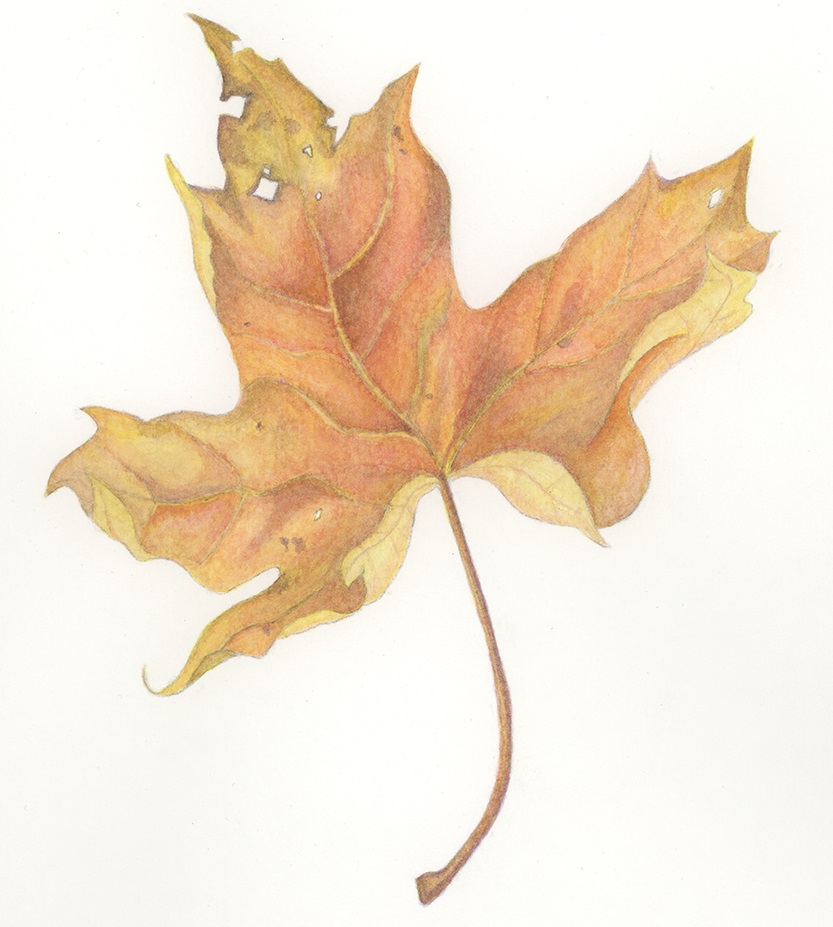
Eager to expand upon my knowledge, I dragged my cousin to a watercolor retreat at Mount Hood in Oregon. To be fair, she didn’t require much convincing. Nikki Frumkin of Drawn to High Places starts with all the basics and encourages you to play and watch how the paint reacts to different scenarios. I knew from admiring her work that she uses a lot of wet on wet techniques in her watercolors. For those unfamiliar, you wet the page, drop on paint, and let it work its magic.
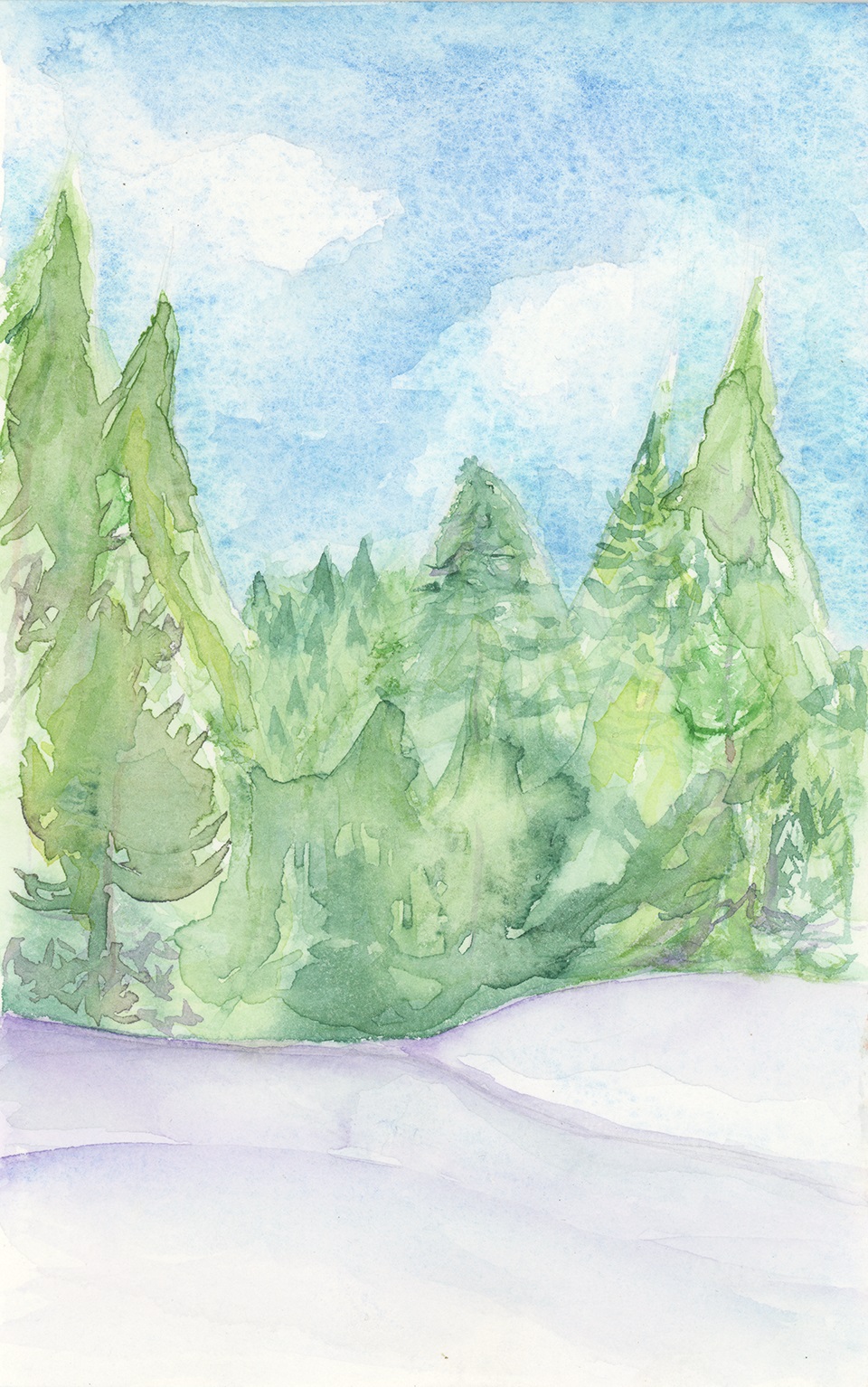
For someone who wants control, it is terrifying. For someone who needs to learn to let go, it is liberating. For someone that likes to have all the tools in the toolbox, it is another skill to add to the set.
I have come to love both techniques and each has its merits. When you try new things, you open up more possibilities. You get to know different mediums and how they respond. And it gives you a wider skill set with which to approach an idea or subject matter.
Surround yourself with inspiration…
We don’t exist in a vacuum. Perhaps there are people out there who can be locked away from everything and let inspiration come to them. Being an introvert, I’ll admit it, I’ve tried. But I find a lot of inspiration from beautiful scenery, empowering conversations with like minded individuals, laughing with my husband, hiking with my dog, the endorphin release of exercise. If it’s not coming to you, take a walk or call a friend and be inspired. Or look up a favorite artist, admire their work or read about their life. Listen to a podcast. Read. Be curious. Google things incessantly to find things that inspire you. Take a class. Just get inspired!
Set goals, establish a routine, and hold yourself accountable…
I was speaking with a fellow artist recently who hadn’t painted in a while. We talked about how hard it can be to get started again after a long break. Make art a priority. Schedule time for it in your week. Spend time between paintings brainstorming and looking for inspiration. If you fall out of habit, don’t be hard on yourself, but do hold yourself accountable. Ask yourself why you got off track and how you can get back into the swing of things.
Prepare your palette…
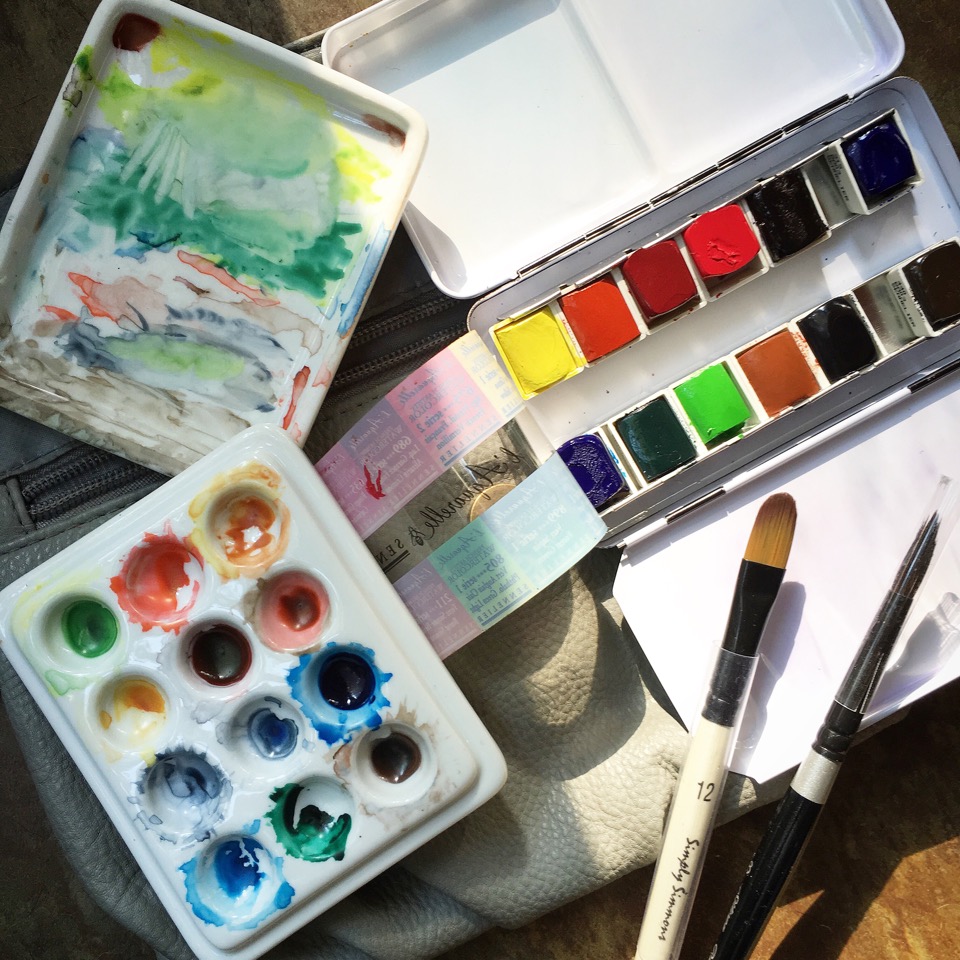
Set up your workstation. Lay our your brushes. Get your paints out. It’s hard to just sit there when it’s all out just begging you to play! And then, treat it like that, like play.
Loosen up. Just start sketching. Make something intentionally garrish or exceptionally crappy. Doodle across a page in meaningless scribbles. Put pen, or pencil, to paper. Put anything to paper just to get your hand moving. Let your hand and eye learn each other and fall into a rhythm. Once you get going and have a little movement, it will start to feel more natural. Let go and let it take shape.
Just keep going…
I’ve heard this put two ways lately and I love them both.
Mary Gwyn circles the classroom, checking in on each of our progress. She encourages us, discusses which color we might layer next, gives a tip or two, and then, “just keep going.”
I can hear her voice in my head when I look at a painting and ask myself if it’s finished (when deep down I know it’s not).
While painting with a couple new friends on a recent morning, we discussed the stages of ugly in your painting. You start painting and you hate it. So you keep going and there it is! You really hate it. But eventually, if you keep going, you have a break through! Or, maybe it stays ugly and that becomes part of the charm? Either way, once you start, don’t be quick to quit. Just keep going!
Ask yourself what you are really afraid of?
Failure? You can’t “fail” at art. Don’t put so much pressure on yourself! What’s the worst that can happen? You ruin a piece of paper? I get it! Art supplies aren’t cheap. But you’re not going to ruin it. If you create something you aren’t thrilled with, turn it into a happy accident. Or paint over it. The less pressure you pile on yourself the more you will allow yourself to be free and play with the paint, and you will likely be happier with the finished product.
Do you experience fear of the blank canvas? How do you overcome it? We love to hear from you! Please comment below!
And, if you are enjoying the content, please subscribe! It is the best way to be alerted to our newest publications.
